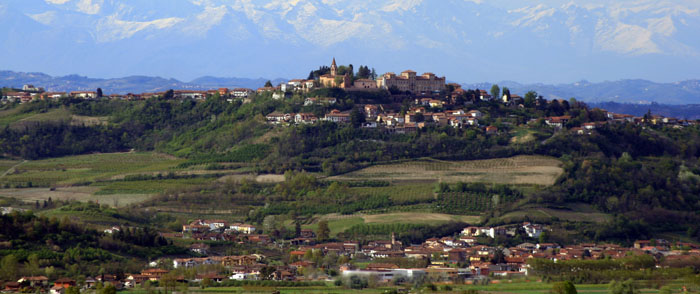

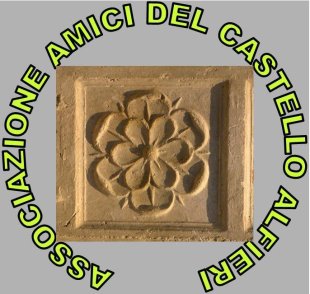
The section devoted to the plaster ceilings of the Museum of Arts and Popular Traditions of Magliano Alfieri, aims to document a very special construction technique very common in country homes of some countries of the Roero district and Ovada. These horizontal connections formed by gypsum-bearing, cast on site in a cradle of beams and rafters of wood, wooden matrices that are inscribed in a negative motif, which remains positive on the panel. The oldest dated attic, found work in a farm of Vezza d'Alba, is dated 1580. The latest examples date from the mid-nineteenth century, when the spread of factories for large-scale production of bricks and sections of iron, lime and cement, promotes standardization processes and the abandonment of techniques, such as the floors, linked to logic of the individual site and relatively small geographical areas..
The floors of decorative panels, light up to 50 cm, the current state of research, a characteristic of the Piedmont areas we have mentioned. Treatises on architecture, in fact, give little value to the plaster as a building material: some nineteenth-century texts technical report (which define the "French", "Italian Style ") to build load-bearing ceilings between wooden joists, but this is panels very narrow and undecorated. The first source of the problem has been identified in the existence of Piedmont, in areas where the floors are present in several chalk quarries, whose work is documented in the seventeenth century, linked to the geological nature of the area, formed in that period Messinian, the Mediterranean when he retired from the Po Valley.
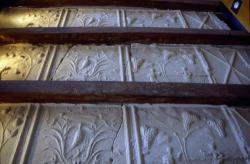
The areas of distribution of the floors are relatively small. At some distance from the quarries the phenomenon is interrupted, to resume as soon as you are back in an area of rock outcrops of chalk. The boundary lines are determined by economic and technical reasons: away from the cave was no longer affordable because of the bad state of roads, transport large quantities of bulky material such as gypsum, which gradually loses its quality with exposure to air, becoming unreliable that ingredient they are talking about the treatise..
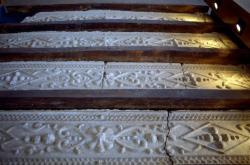
Within the areas of distribution, however, with the plaster did everything: raw and cut in square blocks was used for the construction of the building elevation, cooked and ground was the main component of the mortar needed to bind the bricks of the time and walls, to form the floors, corners conductors and plasters, to frame and fix the hinges of the doors and windows, to cover the reed ceilings, as well as to make the floors. The cast was also the raw material of the stucco that decorated churches and mansions, which were covered with painted dell'intonachino altars pretend coatings of precious materials.
In the home country are of the same material as the decorative elements that often are on the doors and frames that mark the taxes of the time or draw the chimneys and doorways and windows. With the cast finally fertilize the land. This extensive use of the material is clearly linked to high availability: the shallowness of the deposits of chalky rock, their extent, permissive legislation governing the cultivation of the quarries, the simple extraction techniques and materials used, meant that there were a myriad of small businesses conducted by the rural families which integrated so the meager income from working the land. The conditions overexposed held down the price of gypsum sold in the particular market conditions that characterized the economic life of the countryside, even with the exchange of products of the land or the work of the quarry. The reasons for the phenomenon are not only economic but also technical and cultural.
If the production of gypsum is much higher than that of lime and wood, so as to justify the prevalent use of the first, good clay to make bricks could find some 'everywhere, so that the cooked were used for the walls, the floors, roofs and vaults. But the construction of the latter requires a large technical effort and timber for the ribs, while the floors of plaster is also easily achieved and retained heat in the rooms and defending the roof from the fire. Not only that. With decorations they had in the farmhouse a note of preciousness and decorum, referring to the wooden floors of the houses of the rich and other topics of cultured, but also ways of feeling and thinking of peasant culture. The 109 motifs documented in the research demonstrate the importance of culture and decoration had to determine the fortune of this particular building technique.
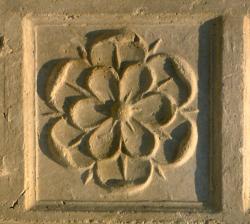
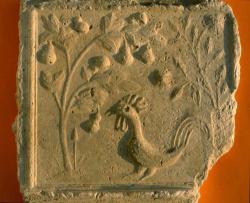
The discovery of the floors and the explanation of the procedure followed for their construction is due to Enrica Flanders, the central unit of the Ministry of Culture and Environment, which, knowing them to have them always seen in the homes of Bagnasco d'Asti, he decided to present them, to illustrate the characteristics and peculiarities, in a series of studies and exhibitions were held in Bagnasco, Asti and Turin between September and November 1972. Spread mostly in country houses, the floors of plaster had become after the war, for many owners, the symbol of a past of poverty, to eliminate as soon as they had the financial ability. Already in those years were a large number of the floors that were demolished to be replaced by modern concrete structures. The initiative of the Flanders was thus intended to elicit testimony about this unique rural culture of the interests of owners and regional bodies responsible for the protection of our cultural heritage.
In those same years in the area of Magliano Alfieri a group of youths, led by Antonio Adriano, still living the life of the countryside around him and seeing disappear quickly customs and testimonies of life and rural culture began to work for the construction a museum of 'Arts and Popular Traditions. Among the items that were collected for this well plasterboard slabs from demolished and dumped in public landfills. La Stampa wrote then to communicate their initiative and ask for directions on how to restore the panels. The Press became known to young people Magliano studies of Flanders: the encounter between the two studies took a new impetus to the idea of creating a museum Magliano Alfieri in which to collect, in particular, the documentation on the floors of plaster and Roero Astigiano.
An intervention for the protection of the Superintendency for the Environmental and Architectural Magliano showed the castle in 1976, the need for a direct involvement of the State for the preservation of the large building which was in danger of being subjected to heavy tamper locate inside the museum seemed that it was intended to establish the most appropriate solution to give a public use of part of the building, which would thus could become the center of the cultural initiatives that were born in the area. In subsequent years, the Ministry of Culture and Environment, through the Superintendency for the Environmental and Architectural Heritage of Piedmont and the National Museum of Popular Arts and Traditions of Rome, financed the restoration of roofs and rooms of the east wing of the castle for the museum, and the filing of plasterboard and other articles intended for exhibition. The Department of Culture of the Piedmont Region, for its part, granted funds for equipment and for research to gather information and documentary material on the characteristics and distribution of floor area to be used to support the museum exhibition.
The research began with the Flanders had developed in two papers published on the subject and further developed in subsequent years. There is both an objective to deepen the data collected in quantitative terms (with the exact definition of the spread of the floors of plaster and the indexing of all the decorations) and qualitative, with the attempt to investigate exhaustively the relationship between the particular construction practice and its environment, in order to understand fully the economic, technical and cultural factors that constitute the root note and at the same time it introduced such characters as part of cultural traditions, housing, technical and economic campaign Asti and Roero..
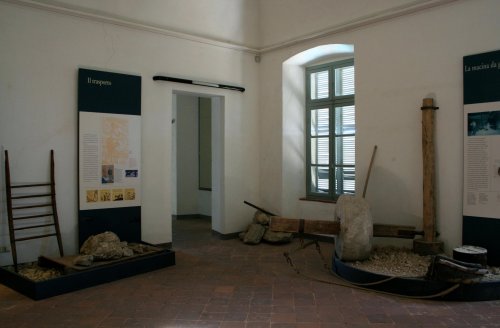
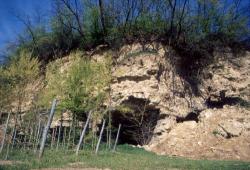
The Museum is meant to present the phenomenon in all its aspects: to explain the construction methods, the physical and chemical characteristics of gypsum that allow many uses, the geological formation of the territory, the methods of extraction and cooking, ways of marketing , building types and urban areas where the floors are situated, the decorations and objects that inspired them. Overall, there was a very important role in the life of the plaster of such campaigns to justify the function of the Documentation Centre dellacultura gypsum in the Roero, Astigiano, nell'Ovadese assigned to the section of the museum September 27, 2002 was opened in His final exhibition (designed by architects. Delmastro and Vaccher) with funding from the Piedmont Region, mainly, and the town of Magliano Alfieri.
March 2003 – Antonio Adriano, Mirella Macera.